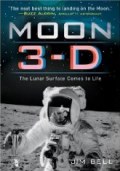Sciencebase has been focusing on various environmental and third world problems recently. I say third world, because much of what is euphemistically described as the developing world is sadly not developing at all. If the switch from third to developing has done nothing but salve the conscience of the so-called developed world, then it is, as they say, political correctness gone mad.
Many of the problems, or issues if you wish me to be euphemistic in that regard too, are growing – the poverty gap, the spread of disease, environmental damage. One might blame the tyrannical feudalism that is common in parts of the third world, the lack of educational resources, and a not unexpected reluctance on the part of people mired in such issues to abandon the straws at which they clutch to stay afloat (to mix a metaphor or two). But, some of the problems are in part due to the greed and desire of multinational corporations, company shareholders, and Western consumers, especially when one considers environmental effects.
 The phrase “carbon footprint” has taken on a somewhat trite role in the media and in marketing reports. It can be used to offset a lot of tiresome obligations and sits neatly in glossy brochures printed on non-recycled board.
The phrase “carbon footprint” has taken on a somewhat trite role in the media and in marketing reports. It can be used to offset a lot of tiresome obligations and sits neatly in glossy brochures printed on non-recycled board.
Not quite so well-known is the more general phrase “ecological footprint”. This term encompasses not only the problem of humanity pumping millions of tonnes of carbon dioxide into the atmospheric greenhouse and accelerating our possible climatic demise but also those problems associated with good old-fashioned pollution, deforestation, desertification and other nasties.
The ecological footprint concept and calculation method were developed by Mathis Wackernagel under William Rees at the University of British Columbia in Vancouver, Canada between 1990 and 1994.
Companies can greenwash endlessly in their marketing with double-talk of sustainability, reduced emissions, and smaller ecological footprints, but are they actually greening their industries or have they simply turned up the G channel in their Photoshopped logo?
Crawford Spence of the John Molson School of Business, Concordia University, in Montreal, Canada, would agree. He has analysed the social, environmental and sustainability accounting practices of large corporate entities. His eye is usually on the emphasis placed by such corporates on their ideology, their ethics, their integrity when it comes to environmental issues. Writing in IJMCP (researchblogging reference below), Spence says there is significant organisational resistance to more comprehensive sustainability reporting in the form of ecological footprinting.
He has interviewed corporate social responsibility managers at various companies and identified three issues that companies have with ecological footprinting. First, the cost and resource constraints involved, secondly the perceived poor value of carrying out ecological footprint and its actual impact on practices, and thirdly, the marketing problem in that a published ecological footprint might not reveal the “right picture”. Fundamentally, all three aspects of ecological footprinting prevent many companies from being pro-active in greening their business despite what it says on the tin.
In what will inevitably become an increasingly constrained world in terms of ecology, ecological footprinting, or sustainability reporting, where it exists will be little more than a marketing exercise for many corporates. Spence asserts that “without significant regulatory intervention or restructuring of capital markets it is difficult to see how it could possibly be otherwise”.
![]() Crawford Spence (2009). Organisational resistance to ecological footprinting Int. J. Management Concepts and Philosophy, 3 (4), 362-377
Crawford Spence (2009). Organisational resistance to ecological footprinting Int. J. Management Concepts and Philosophy, 3 (4), 362-377

 There are lots of online health tests available, some I’ve reviewed on Sciencebase over the years, such as those that help you answer the question
There are lots of online health tests available, some I’ve reviewed on Sciencebase over the years, such as those that help you answer the question  The current issue of my Alchemist column on ChemWeb.com is now online:
The current issue of my Alchemist column on ChemWeb.com is now online: Digital industries continue to wage an unwinnable war against the people and organisations that illicitly copy, share, and sell their products, whether DVD rips, DRM-free music files, or pirated software. But, while arguments about lost revenues, performing rights, and the rest of it rage, at least digital copyright theft is not usually a matter of life or death. Crime syndicate conspiracy theorists would probably beg to differ, but counterfeiting and piracy in another industry – the pharmaceutical industry – most certainly can be.
Digital industries continue to wage an unwinnable war against the people and organisations that illicitly copy, share, and sell their products, whether DVD rips, DRM-free music files, or pirated software. But, while arguments about lost revenues, performing rights, and the rest of it rage, at least digital copyright theft is not usually a matter of life or death. Crime syndicate conspiracy theorists would probably beg to differ, but counterfeiting and piracy in another industry – the pharmaceutical industry – most certainly can be. The UK media has been full of swine flu (H1N1) again this week, it’s been trending, to borrow Twitter terminology, what with reports on the tragic deaths of a young girl and a family doctor, advice on virulence and research from Imperial College London that suggests we need better research into the disease. Widespread anecdotal evidence of the spread of
The UK media has been full of swine flu (H1N1) again this week, it’s been trending, to borrow Twitter terminology, what with reports on the tragic deaths of a young girl and a family doctor, advice on virulence and research from Imperial College London that suggests we need better research into the disease. Widespread anecdotal evidence of the spread of  Head-banging science news with a spectroscopic bent from my latest posts on the SpectroscopyNOW ezines, live June 15.
Head-banging science news with a spectroscopic bent from my latest posts on the SpectroscopyNOW ezines, live June 15. Solar power need not be complicated. Research into complex materials that convert the energy from sunlight into electricity is well underway, but offers only low efficiencies.
Solar power need not be complicated. Research into complex materials that convert the energy from sunlight into electricity is well underway, but offers only low efficiencies. Summer science reading requires a sequel as I suspect most of you have read all the previous recommendations for science books, or if you haven’t you’re not likely to pick them up now. So here are a few more choice tomes.
Summer science reading requires a sequel as I suspect most of you have read all the previous recommendations for science books, or if you haven’t you’re not likely to pick them up now. So here are a few more choice tomes.